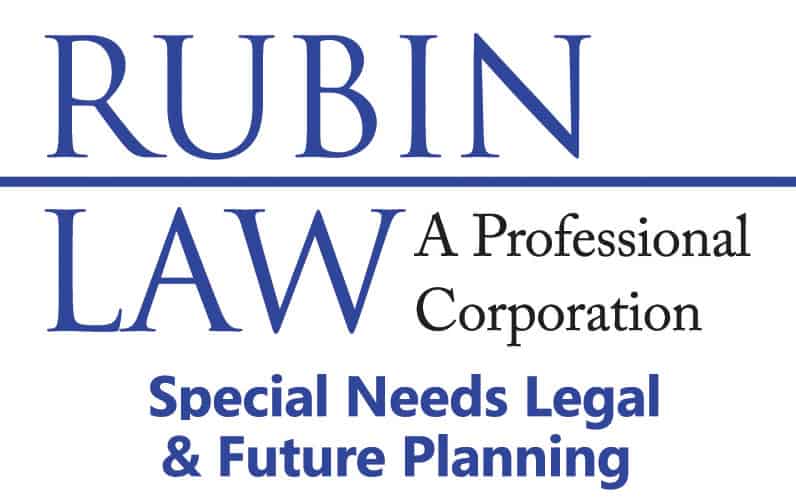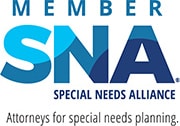
The SECURE Act, SECURE 2.0, and recently released regulations interpreting this legislation have significantly impacted retirement planning, especially as it relates to special needs trusts, which are designed for individuals with disabilities. The changes that these laws have made have created substantial implications for structuring and managing special needs trusts.
The SECURE Act
Before the SECURE Act, individuals who inherited IRAs could stretch out distributions from those IRAs over their life expectancies. This benefit had many advantages, including continued tax-deferred growth and ensuring that distributions would last over the beneficiary’s life, which can be critical for an individual with disabilities.
The SECURE Act established a ten-year distribution rule for most non-spouse beneficiaries of IRAs. Under this rule, beneficiaries must take distribution of the entire inherited IRA within ten years of the original account owner’s death. This rule can lead to potentially higher tax burdens.
Fortunately, the SECURE Act also provided for some exceptions to the ten-year rule for eligible designated beneficiaries (EDBs):
- Surviving spouses
- Individuals with disabilities or chronic illnesses
- Individuals less than ten years younger than the original account owner
- Minor children of the account owner (until they become adults)
The ten-year rule does not apply to EDBs. These individuals can continue to stretch out distributions from inherited IRAs over their life expectancies.
To qualify as an EDB based on being an individual with a disability or chronic illness, the SECURE Act adopted the Social Security Administration’s definition of disability, which generally provides for an inability to engage in substantial gainful activity due to a physical or mental impairment that is expected to last at least one year or result in death. Therefore, individuals who receive Social Security Disability benefits, Supplemental Security Income (SSI), or Childhood Disability Income will automatically qualify as an EDB.
On the other hand, a person with a chronic illness must meet the following criteria and document it no later than October 31st of the year following the account holder’s death:
- The individual is unable to perform (without substantial assistance from another individual) at least two activities of daily living for an indefinite period due to a loss of functional capacity; or
- The individual requires substantial supervision to protect them from threats to health and safety due to severe cognitive impairment.
Individuals typically must provide certification from a healthcare provider of their chronic illness. Self-certification of disability (absent receipt of Social Security benefits) or chronic illness is not generally accepted.
The SECURE Act allows individuals with disabilities to inherit IRAs and still be able to stretch distributions over their life expectancies. This ability leads to lower tax burdens due to lower distribution amounts, as the distributions will be less likely to push these individuals into higher tax brackets. Additionally, if the inherited IRAs are made payable to a special needs trust rather than the individual with disabilities, distributions will not affect the individual’s eligibility for need-based government benefits, such as Medicaid and SSI.
SECURE 2.0
SECURE 2.0, which Congress passed after the SECURE Act, addressed at least one concern involving special needs trusts. This legislation clarified that a special needs trust can designate a charitable organization as the remainder beneficiary without triggering the application of the ten-year rule. Not all charitable organizations are qualified as beneficiaries in this respect, and individuals must be cautious not to name disqualified charities as remainder beneficiaries, such as private foundations. However, this clarification gives families the potential to provide charitable donations with any funds that should remain following the death of a loved one with disabilities, especially to charitable organizations that may have assisted their loved one.
The 2024 IRS Regulations
Initial interpretations of the SECURE Act and SECURE 2.0 raised concerns about whether special needs trusts would qualify for the life expectancy payout method for EDBs, or whether only conduit trusts would qualify. If special needs trusts were not an option, and a person with disabilities was forced to take distributions from an inherited IRA under the ten-year rule, then their eligibility for need-based public benefits could be in jeopardy.
However, the Internal Revenue Service (IRS) recently issued final regulations construing the SECURE Act and SECURE 2.0 that put this concern to rest. The regulations clarified that the life expectancy payout for an EDB can come through any accumulation trust, including a special needs trust, instead of being limited to a conduit trust. As a result, families who wish their loved ones with disabilities to inherit their IRAs can do so without fear of losing access to need-based public benefits and allowing distributions over their life expectancies.
Contact Us Today to Learn More About Our Legal Services
Rubin Law is the only Illinois law firm to dedicate itself exclusively to providing compassionate legal services for children and adults with special needs. We offer unique legal and future planning techniques to meet your family’s individual needs.
Call us today at 866-TO-RUBIN or email us at email@rubinlaw.com to learn more about the services we can offer you and your family.



